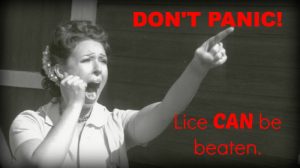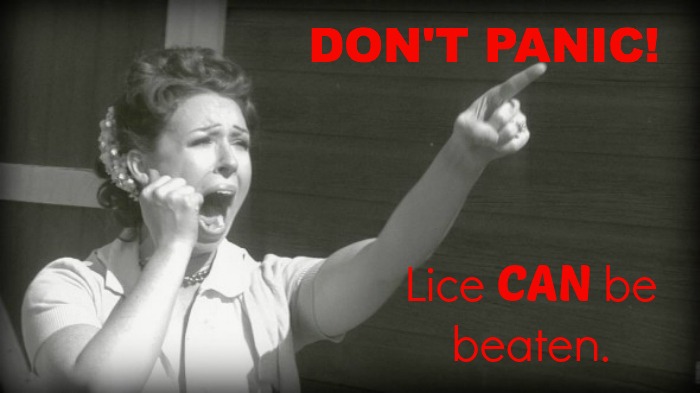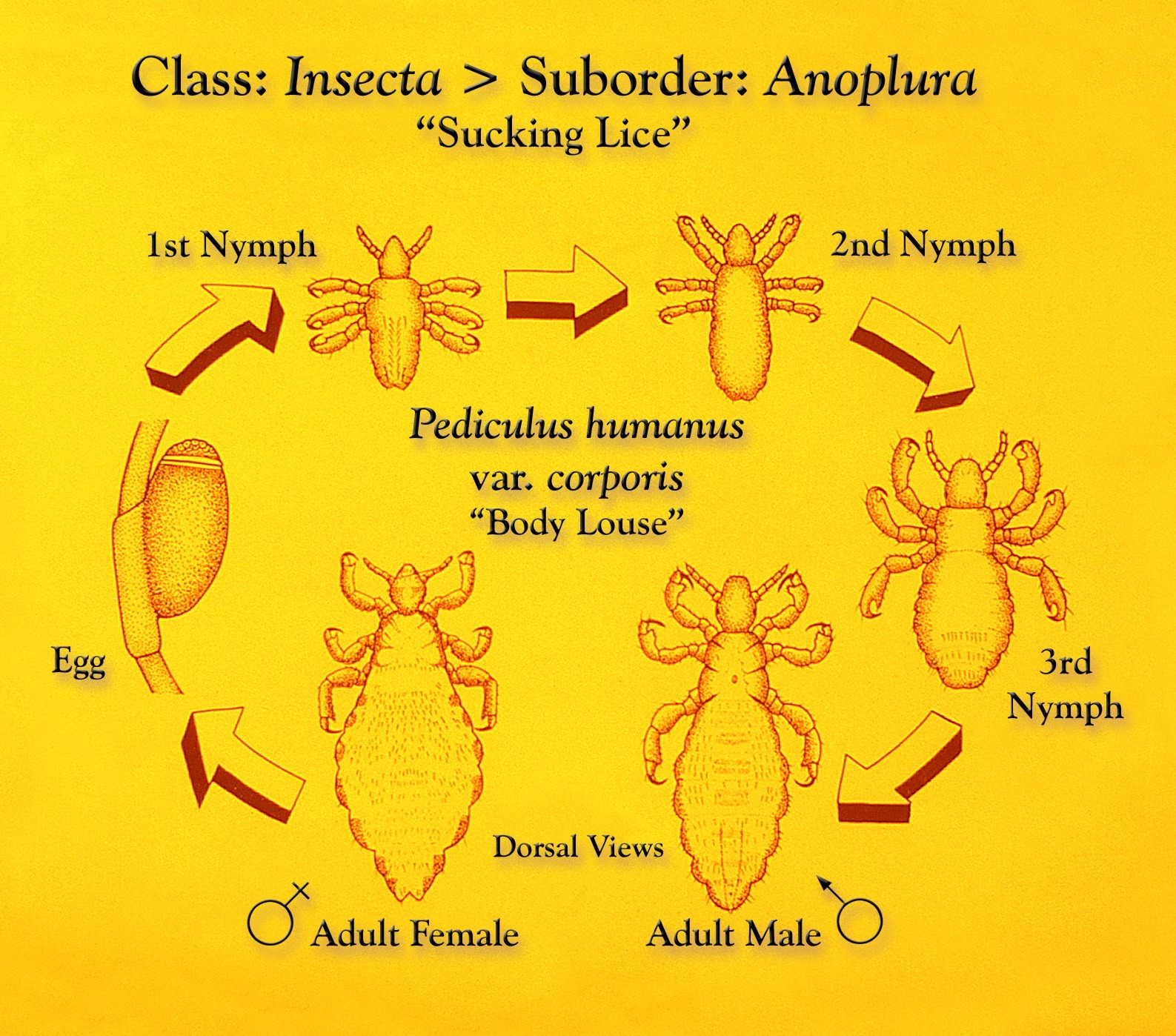Show of hands: Who here has received the dreaded letter from school advising of a lice invasion? Makes your head itch just thinking about it, right? Go ahead; have a good scratch, this will keep.
All good?
It’s that time of the year, and for those of us who have school aged children and are meticulously filing the 1001 forms and letters sent home every day — kidding, there’s a pile of papers listing towards the breakfast dishes — it’s the least favourite part of the new school year. Back-to-school means more than sharing What I Did During The Summer Holidays stories, it means sharing germs and viruses and even lice; kids are givers like that. Most of us are seasoned pros when it comes to tackling runny noses, yet we become irrational when it comes to critters because we’re genetically designed that way and our imaginations were fed a diet of questionable 1980s horror movies during the formative teen years.
Who’s run screaming from the house while simultaneously shaving his or her head after discovering lice on your precious bundle of microorganisms? Just me? Okay, I didn’t shave anyone’s head, but I seriously considered it, but once I calmed down and did some research, I devised a plan of attack for dealing with lice. And yes; they can be beaten.
How Do I Get Rid of Lice? Let’s Look At The Facts
- Having lice sucks. Let’s not pretend everything is A-Okay and that you’re not freaking out and then sit in a circle holding hands while singing Kumbaya. Two of the primary reasons having lice sucks are: a.) they are communicable; and b.) we’re woefully uneducated about what they are and how to get rid of them.
- Head lice (the plural of louse) are small insects that live on the scalp and feed off human blood. They’re like tiny vampires without the sex appeal of “True Blood’s” Eric Northman.
- Lice don’t fly or jump, but they do have legs and claws that grasp and can crawl. That’s how they get around.
- Head lice are transmitted from person to person through direct contact, so think things like sharing a bed or engaging in close play. That means clothing, stuffed toys, and theatre seats are not typically culprits for spreading lice.
- You can’t get them from pets.
- Lice only live one to two days once they’ve been removed or fallen off a person.
- Lice have a short life cycle – approximately three weeks.
- Lice lay eggs (nits) – which are sticky- on the hair shaft and these will mature within 7-10 days.
- You can’t catch lice from nits (the eggs), only from the live insect.
- Having lice does not mean a person is dirty or lives in squalor, so remove that image from your brain. In fact, lice prefer clean, non-oily hair because it’s easier to cling to.
- It’s not a cause for embarrassment, so please educate your children while you’re doing your research. Nobody wants his or her child being made fun of at school.
Kids huddle together to discuss strategies for full contact soccer matches or to admire each other’s friendship bracelets or to plan world domination, so their heads do touch sometimes. I’m not prepared to risk live lice changing locales from my child to another child if I know mine has it. The medical professionals tell us there’s no risk of infectious diseases and we know that, but we (the parents and schools who have to deal with the situation) still hate the bastards and want them gone. Constantly passing lice around the schoolyard so that the Lice Squad has to camp out in the teacher’s lounge is avoidable with proper treatment and a controlled environment. If that control means keeping children home until the live lice are dead — which usually takes one treatment with a non-toxic wash — that’s what I’m doing.
A different approach is needed to eliminate nits; remember these are the louse eggs, they are laid on the hair shaft, and are stuck there, so there’s no chance of them crawling around on account of them being eggs and not having any legs. Children can be safely sent to school once the lice are dead even if there are nits left on the shaft.
Treatment For Lice And Nits
- Wash combs and brushes, as well as any hair accessories that were recently worn in hot, soapy water and allow to soak.
- Wash bedding and clothing worn within the last day or two in hot, soapy water and dry using the hot setting on your machine.
- Wash hair using a non-medicated, non-toxic treatment to kill the live lice. There is controversy about using pesticides (which is what medicated washes consist of) on children’s heads. Lice are increasingly developing resistance to these treatments.
- Alternatively coat the hair in a combination of tea tree oil and vegetable or olive oil, cover with a shower cap, and let sit for 4 hours before washing out.
- Follow both of the treatment and washing options with a thorough comb-through using a special nit comb available in most pharmacies. They’re pricey, but worth it because they work.
- As an added measure, once the hair has been thoroughly combed using a nit comb, dry it using the hottest setting on the hair dryer and follow with a hair straightener. Heat is effective for killing lice and removing nits.
- Check the hair for live lice and continue to comb the hair every 2-3 days for a few weeks.
Prevention
- Communication with the school is paramount. If you find nits or lice on your child, please notify the school and the parents of your child’s friends immediately out of courtesy for other families.
- You can tell little Rebecca five thousand times to remember to bring home her lunch box and not share hats with anyone else and she’ll still likely forget 47% of the time. She’s a child. My approach as the mother of a girl who has long hair is to keep her hair in a braid or ponytail while at school and give her daily reminders not to (literally) butt heads with anyone.
- According to some research as well as many cultural traditions, lavender oil is an effective insecticide for certain bugs. I’ve been dabbing pure lavender oil behind my children’s ears and on the nape of their necks every morning for years and the one time I forgot was the time the lice made it in. Plus, they smell good and fall asleep easily at night.
- Most importantly, be vigilant. Check your child’s hair and scalp regularly for lice or nits. Most organizations recommend conducting weekly checks during the school year or when children attend camps.
Now that you’re armed with the facts, and sufficiently itchy, you can tackle any potential lice problem that comes your way.
Helpful Lice Resources For Parents
Lice MD (It’s a product site, but has good information.)
Government of Saskatchewan: Head Lice




 Why Running for the Cure is Good for Your Boobs and Other Health Benefits
Why Running for the Cure is Good for Your Boobs and Other Health Benefits
peady
This is really great! I hope every parent reads this and shares it with their Parent/School Council.
Everyone must remain calm. It’s the only way. 🙂
I have an extremely dear friend and, without a word of lie, we *totally* bonded over Pediculosis during a Parent Council meeting. 😀
Now, just thought you should know, when I share this post I might *accidentally* refer to this site as “Lice in Pleasantville”.
Terrific post!
Katja
Thank you – scratch – that’s good of you to say – scratch – we must all stay calm – scratch scratch scratch.
peady
Heh heh! Guess what? It doesn’t even faze me. I am the calm one when it comes to this stuff. Everybody needs to talk about it and spread the word – rather than the affliction! 😀
The preemptive strike is your BFF. Never send kids to school with squeaky clean hair. Never. A bit of product and regular use of tea tree oil/shampoo and so far so good!